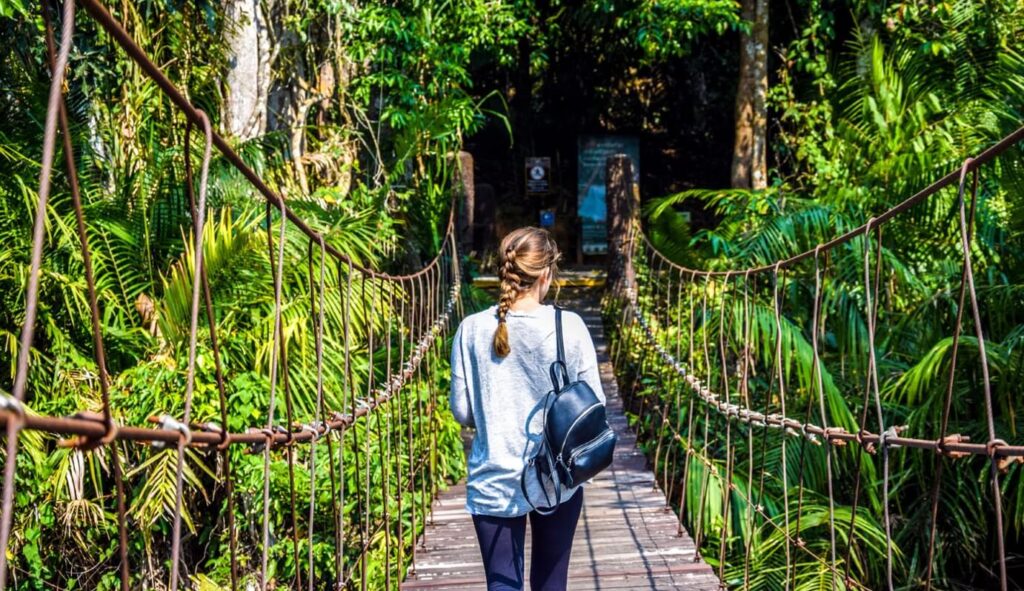
The Khao Yai National Park is Thailand’s third-largest national park, and it is one of Thailand’s most popular tourist destinations. The Khao Yai forest complex, which includes Ta Phraya National Park, the Dong Yai Wildlife Sanctuary, Thap Lan National Park, and the Pang Sida National Park, was declared a UNESCO World Heritage Site in 2005.
Khao Yai is considered one of Thailand’s best national parks for seeing wild animals, and with its impressive collection of fascinating species, including vulnerable and endangered wildlife, bat caves, and interesting insects this comes as no surprise.
Read on to learn more about this incredible national park.
This popular park tends to get extremely busy on weekends and public holidays, with visitors from all over and especially Bangkok coming to spend a day trip on a guided tour through the lush greenery and beautiful waterfalls. The park has pleasant weather year-round, which is a big part of its appeal.
For a first time traveller, Thailand’s weather can be challenging to navigate. As with many other parts of Thailand, the Khao Yai National Park has three seasons; a hot season, a rainy season, and a winter season. Read on to discover which season is best for visiting Khao Yai National Park.
Unlike other areas in Thailand, the hot season in Khao Yai National Park is quite pleasant, with average daily temperatures only reaching around 70 degrees Fahrenheit. Average night temperatures drop even lower than 65 degrees. The hot season in Khao Yai National Park runs from March until April, making it a very short season.
The hot season is an easier time to drive around in Khao Yai National Park, as the roads are better. The thinning of leaves and vegetation also makes the dry season an excellent time for exploring the hiking trails in the jungle, bird-watching, and wildlife-watching.
For example, during the dry season in Khao Yai National Park, tourists have the best chance at spotting wildlife such as sambar deer, barking deer, and the Gaur, a rare species of wild cattle that have been listed as vulnerable since 1986. The best time to spot Gaur is after sunset when these animals like to graze in the grasslands.
The Gaur is not the only vulnerable species among the park’s wildlife. The park is also home to white-handed gibbons, an endangered primate species.
Khao Yai National Park’s wet season, often dubbed monsoon season in Thailand, runs from May until October. Daily temperatures can go as high as 75 to 80 degrees Fahrenheit during the rainy season, but rain showers in the mid to late afternoon typically cool Khao Yai down.
However, the considerable humidity makes the rainy season in the Khao Yai National Park less pleasant. Additionally, nighttime temperatures typically don’t drop much lower than daytime temperatures.
This is an ideal time to visit the impressive waterfalls found at Khao Yai National Park, as they are in full flow because of the rain. The jungle has lush green vegetation, including brightly-coloured fungi covering nearly every surface. The park’s most famous and biggest waterfall is the Haew Narok Waterfall, and most travellers prefer visiting this 80-metre tall waterfall during the morning to miss the afternoon rain showers. Another popular waterfall in Khao Yai is the Haew Suwat Waterfall.
The park’s wildlife-watching tends to be slightly less eventful during the rainy season, as some of the birds and the more impressive animals tend to seek shelter from the afternoon rain. However, many tourists enjoy all the beautiful butterflies and interesting insects that are plentiful during the wet season in Khao Yai.
Many seasoned tourists agree that the winter season, from November to February, is the best time to visit Khao Yai National Park.
This season brings cooler weather, with average daily temperatures only reaching around 65 degrees Fahrenheit, similar to the hot season. However, night temperatures can drop to 50 degrees or lower during the cool season, ensuring a more pleasant sleeping experience.
Unfortunately, the waterfalls during the winter months are less impressive. However, this is still an excellent time to see some of Khao Yai’s wildlife since the park is still lush from the rainy season. It is also an ideal time for outdoorsy tourists who enjoy activities like hiking.
The cool season and hot season is generally considered the best time to visit Khao Yai National Park, as the weather is pleasant and the waterfalls and surrounding misty mountains are full and lush. This is also an excellent time for wildlife-watching and hiking the national park’s official trails. Additionally, this is the time when the park’s wild elephants are at their most active.
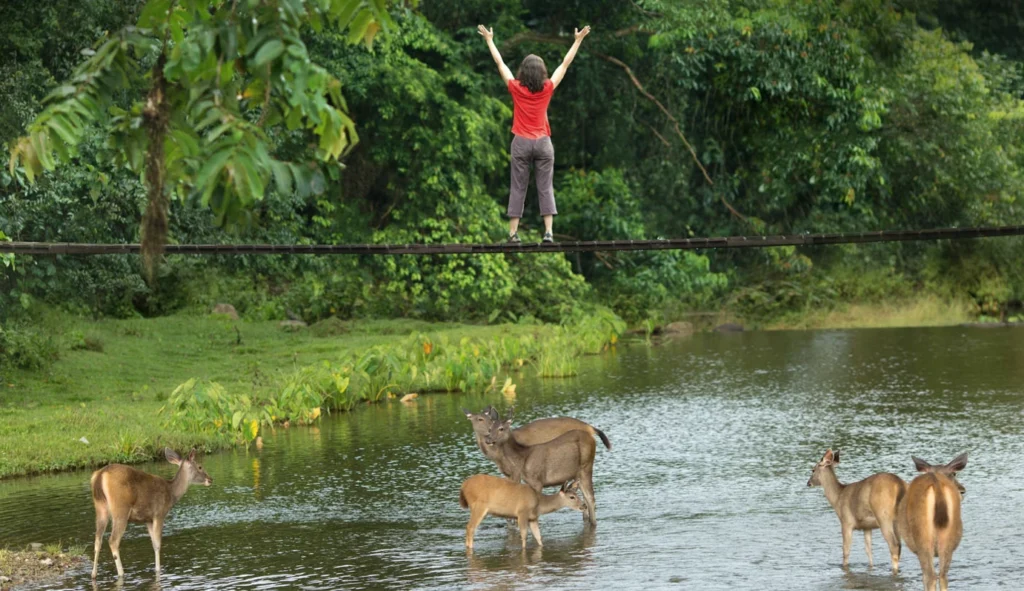
Key events:
Stress Free Festival – Held towards the end of January, the event focuses on rest and relaxation with activities such as yoga, fortune-telling, spa treatments, and live performances.
The rainy season from April to October has slightly less pleasant weather than the cool and dry seasons, with fairly high temperatures and high humidity. However, Khao Yai National Park’s waterfalls are at their most impressive during the rainy season, and the surrounding jungle’s vegetation is at its most impressive.
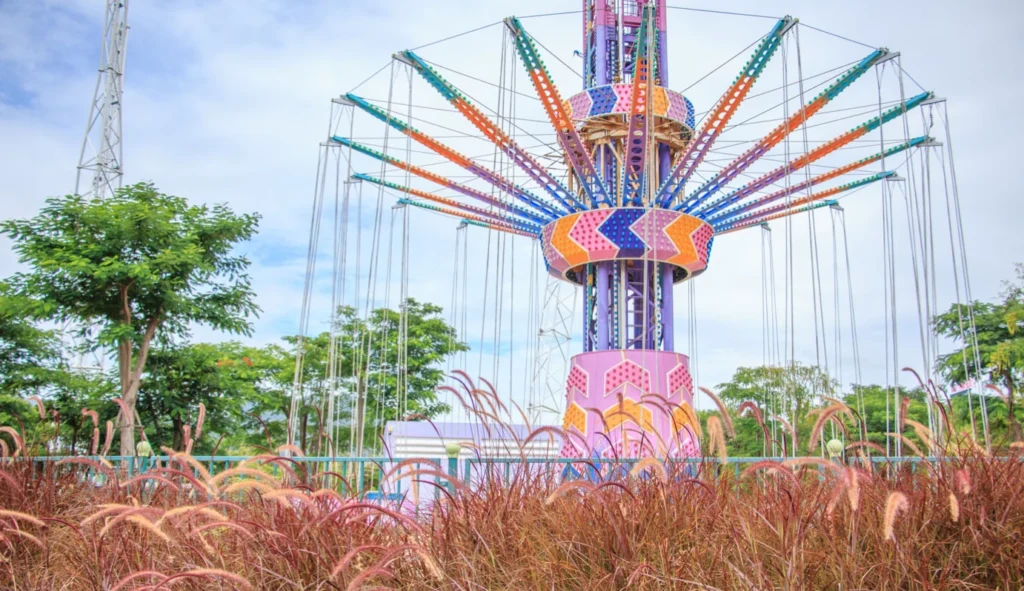
Key events:
Songkran Festival – The Thai New Year, celebrated each year from the 13th to the 15th of April with a water festival, including water sports and water fights.
Note: Khao Yai is famous for big music festivals and concerts, such as the Big Mountain Music Festival. Different ones are held each year, so keep an eye out for any music festivals happening while you’re visiting Khao Yai National Park.
There are many reasons why travellers would want to visit Khao Yai.
The Khao Ya National Park’s stunning Haew Suwat Waterfall is one of the main attractions. It is especially impressive during the rainy season when it is in full flow. However, many tourists also visit the national park during the wet season to see the Haew Narok Waterfall.
Another main attraction is wildlife-watching in the national park. The park’s wildlife includes wild elephants, sambar deer, barking deer, and endangered wild animals such as the Gaur. This UNESCO World Heritage Site is also one of the best Thai national parks for bird-watching, especially early morning. As a result, the park’s opening hours can get extremely busy, especially on weekends, with visitors streaming in from Bangkok to try their hand at spotting wildlife. For this reason, it is best to plan and book ahead of time.
There are a few different options to consider when travelling to Thailand’s third-largest national park, whether on a day trip or group tour. Read on to discover which form of private or public transport is best for your next trip to Khao Yai National Park.
Because Khao Yai National Park is only about 200 kilometres from Bangkok. The easiest way to get to Khao Yai is to travel from Bangkok to the Pak Chong district first. It is the closest town to Khao Yai National Park, which is why most tourists head to Pak Chong before getting to Khao Yai. It serves as a standard gateway to the national park.
Bangkok has two international airports accepting flights from all over the world, namely Don Muang Airport and Suvarnabhumi Airport. Once in Bangkok, there are different forms of public transportation to get you to Pak Chong.
Buses to Pak Chong leave from Mo Chit bus station in Bangkok every day, and some buses depart from Bangkok Northern Bus Terminal. A bus journey from Bangkok to Pak Chong station takes around three to four hours, and travellers can expect tickets to cost about 270 Thai Baht. However, do make sure to get on the right bus, as buses travelling into other towns don’t tend to stop at Pak Chong, even if it is en-route.
Alternatively, you could hail a van from Mo Chit bus station in Bangkok, which will take you to Pak Chong. These vans are faster and slightly cheaper than buses, at around 150 to 170 THB.
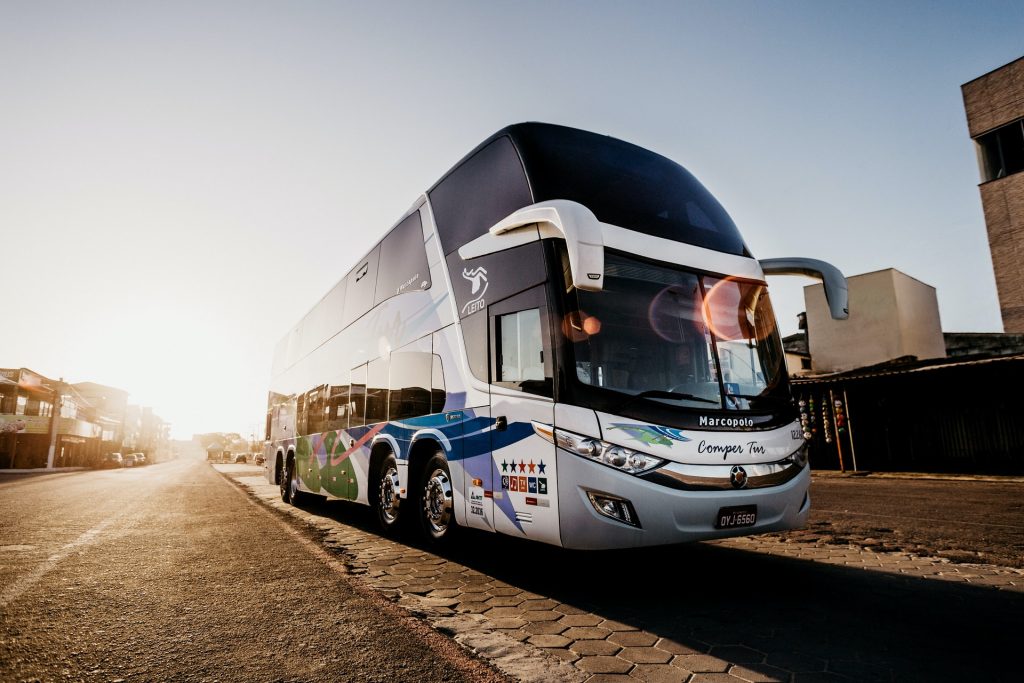
Another option to get from Bangkok to Pak Chong is via train. For most travellers, this is the most convenient mode of transport to Pak Chong.
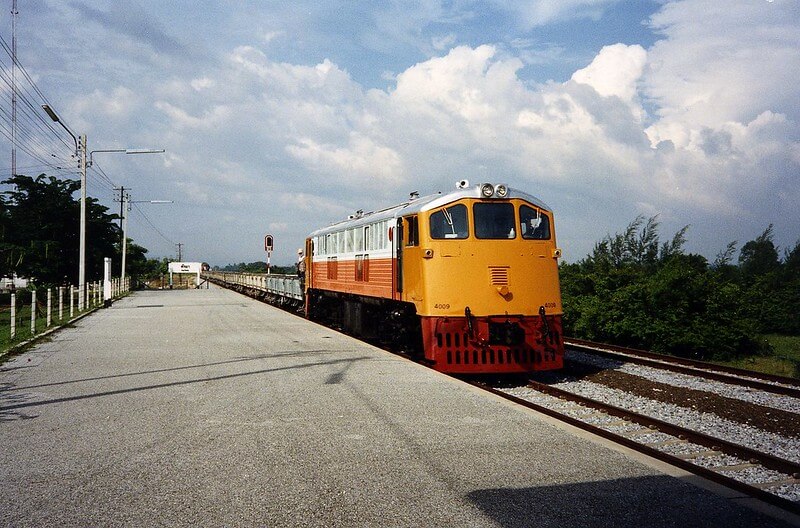
The journey takes around four hours from Hua Lamphong train station to Pak Chong, and you can expect to pay about 90 THB. However, keep in mind that ticket prices vary, and the air-conditioned trains can be slightly more expensive.
Note: Train fares depend on the class of train, and it is a good idea to inquire about the different trains and their prices before undergoing your trip.
Once in Pak Chong, most accommodations can arrange for you to be picked up at the bus or train station. It takes about 40 minutes to travel the 10 kilometres from Pak Chong to Khao Yai.
If you are visiting Khao Yai National Park in a group, you can also arrange a private half-day or full-day tour of Khao Yai National Park through your guest house or hotel.
For tour groups to Khao Yai National Park, you can expect to pay anything from 500 Thai Baht for a half-day tour to 1500 Thai Baht for a full-day tour. In addition, tour groups are also expected to pay a fee of 400 Thai Baht at the park entrance gate and an additional 30 Thai Baht for taking in a motorbike.
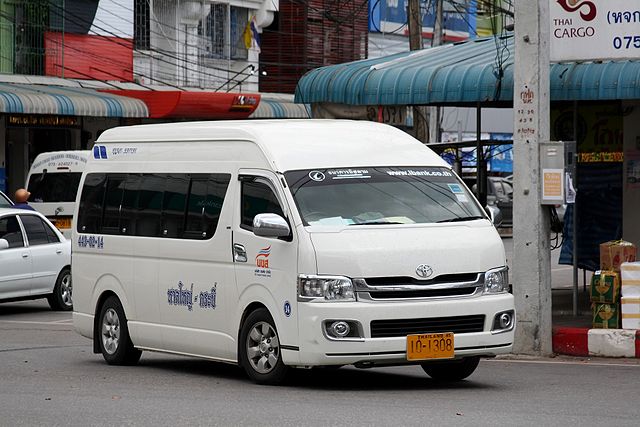
There is also the option of hiring a minivan or minibus taxi. The taxi will pick you up at the airport or your accommodation, and these taxis can suit around six to ten people. Depending on which vehicle you choose, it will cost you anything from 2500 to 3500 THB for a one-way trip to Khao Yai.
There are many things to see in Khao Yai National Park. Many tourists visit the national park simply to see the famous Haew Suwat Waterfall, which was featured in the 2000 “The Beach” movie, starring Leonardo DiCaprio. Other visitors come to Khao Yai National Park simply for the wildlife-watching, hoping to see the wild elephants or barking deer.
Whatever the reason for your visit, there are a few different options for getting around Khao Yai National Park once you are in Pak Chong. However, since Pak Chong is about 30 or 40 minutes from Khao Yai by car, you would first need to arrange private or public transportation to the national park’s northern entrance, southern entrance, or visitor centre.
Khao Yai is Thailand’s third-largest national park, covering an area of 2168 square kilometres. Because it is so big, the best way to get around this UNESCO World Heritage Site is on wheels.
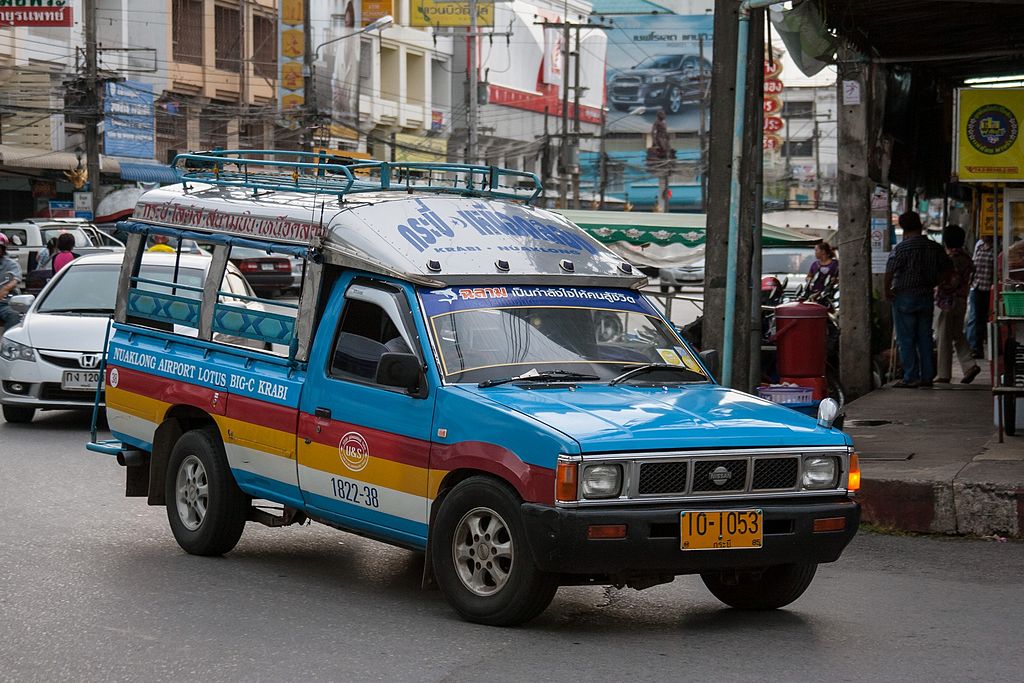
One of the cheapest ways to do this is to take a songthaew from Pak Chong, near the Giraffe Statue or from your accommodation to Khao Yai National Park’s northern entrance. Keep in mind that there is an entrance fee of around 400 Thai Baht when entering the national park. The songthaew will cost you around 40 THB. From there, you can hitchhike to the park’s visitor centre.
You can also take a taxi from Pak Chong directly to the visitor centre, which can cost around 300 THB. If you had a pleasant trip, be sure to get the taxi driver’s contact details to arrange for a pickup once you are done visiting Khao Yai National Park.
Once at the visitor’s centre, you can explore Khao Yai National Park on foot or by hitchhiking. Some of the shorter hiking trails can be taken comfortably on foot, but you will need a vehicle for longer trails and routes. Hitchhiking in the national park is fairly easy, as many tourists are happy to give hitchhikers a ride.
There is also the option of taking a guided hike, led by a park ranger, for around 500 to 1000 Thai Baht. This includes transportation to certain areas, and it’s a great way to learn more about the park.
Note: While this option is the cheapest since hitchhiking is free, you may find it challenging to get a ride during the week when the park is quieter or during the low season. If you plan on hitchhiking exclusively, it may be best to visit Khao Yai on a weekend when the park is busiest.
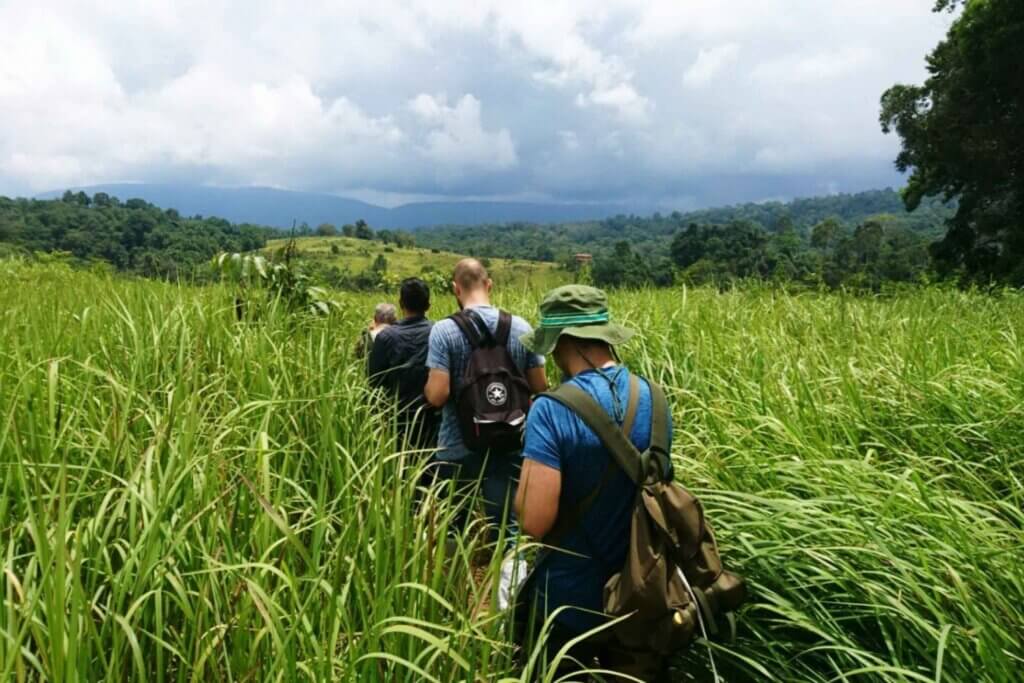
A guided tour is another great way to get around Khao Yai National Park.
These tours can usually be booked through your guesthouse or accommodation or through a tour company and cost anything from 500 Thai Baht for a half-day tour to 1500 Thai Baht for a day trip. Guided tours like these are an excellent way to get around if you want to learn more about Khao Yai National Park.
The park itself also offers tours, ranging from one to three days, and a great perk of these tours is the night drives often included in the package. The night safari drives are a must for tourists who are visiting Khao Yai National Park for the wild animals.
Some tours even include trips to a fresh market where you can visit the different food stalls and pick up fresh ingredients.
You may also decide to combine a full-day tour with some independent exploration of the park’s natural wonders. For example, you could arrange it so that the tour operators leave you at Khao Yai National Park once the tour is over and pick you up at the end of another tour. This would give you a few days between tours to indulge in some bird-watching, spotting wildlife, or exploring the many hiking trails the park has to offer.
However, not all sights in the park are easily accessible via jungle hikes, so you may need to arrange your own transportation while at the park if you plan on visiting sites further away- such as the Haew Narok Waterfall. You will also need to arrange accommodation or make use of one of the two campsites at Khao Yai if you plan on staying a few nights.
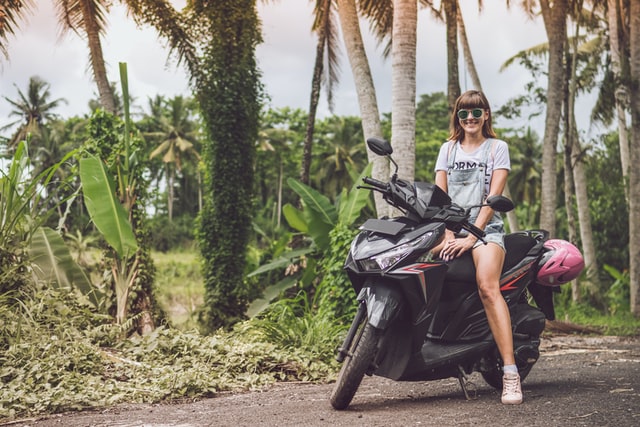
The most convenient option for exploring Khao Yai by yourself is by renting a vehicle and making use of the two campsites or the bungalows. Each campsite has a car park with parking spaces, restaurants, and facilities, and tourists can rent tents and sleeping bags. There are also bungalows that can be rented in the park at around 800 Thai Baht for two people, but you will need to book and pay ahead through the Department of National Parks.
Many seasoned tourists recommend renting a motorcycle to get around Khao Yai National Park. Keep in mind that there is an additional 30 THB entrance fee if you bring a motorcycle into the park boundaries. Nearby places rent motorbikes for anything from 300 to 600 THB a day. Be sure that the cost includes a helmet.
You can also rent a car in Pak Chong, the closest town to the national park, and travel to and around Khao Yai National Park that way. This is perhaps the most comfortable option, as you will have air conditioning if you are visiting during the hot season to see the park’s wildlife. Cars are also covered, unlike motorcycles, making them more convenient if you visit during the rainy season to see the park’s magnificent waterfalls.
However, while renting a vehicle such as a motorbike or a car is more convenient, it is also less friendly to the environment. Because Khao Yai National Park already gets many visitors and a lot of traffic, the more eco-friendly option to get around Khao Yai, is by renting a bicycle. They can be found at the visitor centre and cost only about 50 to 60 Thai Baht per day, making renting a bicycle one of the least expensive ways to travel in the park.
Note: When renting a motorcycle or bicycle, remember to wear a helmet and appropriate protective clothing.
Khao Yai National Park is one of the must-see destinations in Thailand, and for good reason. From the gorgeous Haew Narok Waterfall to the simply amazing wildlife, Khao Yai National Park is the perfect location to appreciate Thailand’s beauty.
When visiting Khao Yai National Park, you have one of two accommodation options- Staying in Khao Yai National Park or staying outside of Khao Yai in the surrounding area.
Read on to discover which option would be best for your trip to Khao Yai National Park.
Jump to location

If you choose to stay outside of Khao Yai, you will find far more accommodation options.
The small town of Pak Chong is closest to Khao Yai National Park. It is about 50 minutes away from Khao Yai by car, and there are many accommodation options in Pak Chong or along the main road to the park’s northern entrance. The park is easily accessible from Pak Chong via songthaews, taxis, or tours run by your accommodation.
Staying in Pak Chong town could be ideal for tourists who don’t intend on visiting Khao Yai National Park for longer than a day tour and one-night safari.
The Catch
If you end up staying outside of Khao Yai National Park, you will have to keep paying the 400 Thai Baht entry fee every day you visit the park. Additionally, early mornings and sunsets are peak times for wildlife spotting, and if you stay outside of Khao Yai, you won’t be able to access the trails at these times.
If you intend to visit Khao Yai National Park for longer than a day, many seasoned travellers recommend staying in the park itself.
Staying in the park means you will have access to the hiking trails early in the morning and in the evenings and only need to pay the entry fee once. It’s also ideal for visitors who intend to go on night safaris. Staying in the park and close to the visitor’s centre will also mean access to free Wi-Fi.
It’s a more immersive experience and perfect for tourists who don’t need room service, air conditioned rooms, or a private pool to have a fantastic stay.
As there are no hotels in Khao Yai National Park, you can choose between camping or staying in one of the bungalows in the park.
Khao Yai National Park has two available campsites where visitors can stay in tents.
Lam Takong is located on the riverside and has better bathroom facilities. There is also a coffee shop, and bicycles can be rented at this campsite. Pha Kluai Mai, on the other hand, is conveniently located for easy access to the hiking trails.
There are restaurants and convenience stores near both campsites, and it costs only around 30 Thai Baht a night to camp there- provided you have your own tent and sleeping bags. There is also the option of renting tents at about 150 to 250 Thai Baht, depending on the tent size, and you could rent camping supplies like pillows and sleeping bags for a good price.
Keep in mind that the Macaque monkeys in the park may find their way into your tent, so it is highly recommended that visitors keep their food items locked securely away or on their person when they leave their tents unattended.
The downside of staying in Khao Yai National Park is that the campsites tend to get crowded with students over the weekend, making it more of a party destination than one for peace and relaxation. Additionally, both campsites only have cold-water showers, which would be less comfortable when visiting Khao Yai during the colder months.
The bungalows that can be rented in Khao Yai National Park are arguably the more comfortable option. They have clean rooms, hot showers, beds, charging outlets, and protection against the elements during the rainy season.
The bungalows are divided into four different zones, scattered throughout the national park. The first zone is the closest to the park’s visitor centre, and the second zone is not far from it. The third and fourth zones are further away, and there are no restaurants nearby. These zones are recommended for visitors who have their own vehicle and are looking for some peace and quiet.
There are various sizes available, and the bungalows can house anything from two to thirty people. You can expect to pay around 800 to 9000 Thai Baht a night, depending on the size of bungalow you choose, making this the more expensive option for staying in this UNESCO World Heritage Site. However, the comfort gained from staying in one of the bungalows is good value for money.
Keep in mind that booking bungalows can be a challenge, and it might be best to book them through a tour company. Also, keep in mind that the checkout time is noon.
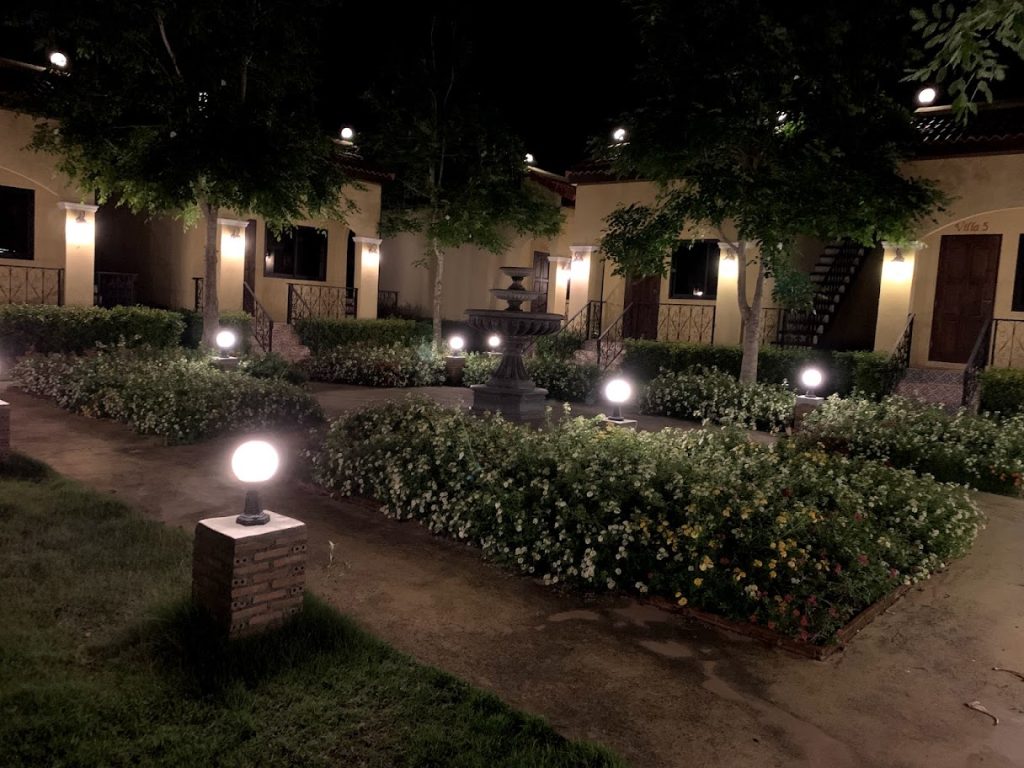
The bungalows, much like the campsites, become extremely busy on weekends or during public holidays and are often fully booked. These bungalows need to be booked 60 days in advance, but the booking website is only available in Thai (unless roughly translated by your search engine). There is also the added difficulty of having to pay via bank transfer, and visitors can only stay in the bungalows for a maximum duration of three nights.
There is a wide variety of activities to enjoy when you visit Khao Yai National Park, from the dense forest and several waterfalls to the famous chocolate factory and art classes. During weekends and on public holidays, the park is buzzing with visitors from all around the globe, coming to see what Thailand’s first national park offers.
Read on to discover different popular activities you may enjoy on your next day trip to this UNESCO World Heritage site.
Khao Yai National Park is a great site for hiking. There are more than 50 kilometres of trails to choose from, some shorter and others longer. Not all areas are reachable by hiking. Some may be too long for the average tourist, but hiking the trails of Khao Yai National Park is an ideal way to enjoy some early morning fresh air and immerse yourself in its extraordinary beauty.
Some popular tourist attractions in Khao Yai include the Haew Narok Waterfall. This beautiful waterfall is a staggering 600-metre long hike away, but as the tallest waterfall in the park, it is a must-see. This waterfall is also located in an area where tourists are likely to see wild elephants. There are bathrooms and a restaurant where the trail starts, which means you won’t need to hike on an empty stomach, and you can enjoy refreshments and delicious food once you’re back.
However, this is not the only beautiful waterfall worth seeing in Khao Yai. Other popular falls to visit are the Haew Suwat Waterfall and the Nam Tok Pa Kluai, where wild orchids grow in the surrounding rocks. These gorgeous waterfalls make for the ultimate Instagram Backdrop, especially during the rainy season, and many tourists visit them for photo opportunities.
Hiking is also an excellent way to see other wild animals. The park is home to a stunning collection of wildlife, including Asian black bears, sun bears, and black giant squirrels.
Another perk of hiking is bird watching. Khao Yai is home to stunning birds, such as the Great Hornbill, Green Magpie, and Red-breasted Parakeet.
One of the shorter hiking trails in Khao Yai is the 3.3-kilometre long trail from the visitor centre to the Nong Pak Chi Observation Tower. You will need to be accompanied by a park ranger guide, but the Nong Pak Chi Tower is a great way to observe some of the park’s wildlife.
Night safaris are an excellent way to see some of the nocturnal wildlife in Khao Yai National Park.
Park rangers take visitors on a guided tour in a pickup truck that lasts around an hour, during which they show travellers as many different animals as they can spot. Some of the animals that can be seen on a night safari include Asian palm civets, field mice, and snakes. These night tours typically begin after the day tour visitors have left, around 7 pm.
Another thing worth seeing around sunset in Khao Yai National Park is the famous Khao Luk Chang Bat Cave. This truly ethereal cave houses up to 2 million bats that all exit the cave at once and create stunning swirls and patterns in the sky.
Note: If you are staying in the Pak Chong district, you will need to pay the entrance ticket of around 400 Thai Baht to enter the park on a night safari.
If you are visiting Khao Yai National Park as part of a romantic getaway, you may enjoy a visit to Primo Piazza.
Khao Yai brings Italy to Thailand in this Tuscan-style, rural village (sometimes referred to as Palio or Little Italy). The square has classic Italian architecture and cobblestone streets that make it feel just like a small town. Located on a lush, green mountain, the Tuscan village of Primo Piazza creates a relaxing, warm atmosphere reminiscent of the Mediterranean.
There are many cafes and restaurants to enjoy, as well as a small farm where visitors can pet and feed sheep, donkeys, and alpacas- making this an excellent attraction for families with young children.
The cobbled streets are also perfect for couples to take romantic strolls.
Note: There is an entrance fee of around 100 to 200 Thai Baht for adults and about 50 Thai Baht for children.
Because of the pleasant weather in Khao Yai National Park, wine grapes grow happily in vineyards all over, and Khao Yai has been producing wine for over ten years. Khao Yai has quite a few local wineries where visitors can indulge in wine tasting. Some vineyards even produce non-alcoholic wines and their own coffee for those less inclined to drink alcoholic drinks. There are also restaurants where travellers can enjoy delicious Thai dishes, like mango sticky rice or papaya salad.
Tours of these wineries include explanations of different grape varieties, how the temperature and soil affect the growth of these grapes, the processes of making each type of wine, and visiting the vineyards and fermentation/ageing rooms. There are also some other fruit orchards that tourists can visit.
These wineries are typically located just outside the park’s northern entrance.
Note: Besides the wineries and vineyards, alcohol is forbidden inside all Thai national parks. Also, keep in mind that while the entrance is usually free, you may need to pay for a proper tour of the winery.
The Khao Yai National Park charges a 400 Thai Baht entrance fee for foreign visitors who are adults and 200 Thai Baht for children. The park entrance fee is 40 THB for adults and 20 THB for kids for local residents.
Thailand is home to a whopping 147 national parks. Khao Yai National Park is the third biggest national park in the country, bested only by Kaeng Krachan National Park and Thap Lan National Park. Kaeng Krachan mainly consists of a rainforest, and Thap Lan is a mountainous area with protected trees and streams.
Khao Yai was declared a UNESCO World Heritage Site in 2005 as part of a forest complex that includes Ta Phraya National Park, the Dong Yai Wildlife Sanctuary, Thap Lan National Park, and the Pang Sida National Park.
The park’s wildlife is one of Khao Yai’s main attractions. Visitors can expect to see a wide variety of animals, such as wild elephants, pig-tailed macaques, field mice, sambar deer, and the endangered Gaur. The park is also home to around two million bats, so visitors can expect to see many bats flying around if they go on jungle hikes in the evenings.
And those are not the only amazing flying creatures that tourists can expect to see in Khao Yai. On the contrary, Khao Yai National Park is an excellent spot for bird-watching and is home to many different species- such as the Banded Kingfisher and four species of Hornbill.
Khao Yai National Park has many beautiful waterfalls. One of the most popular waterfalls tourists like to visit, especially during the rainy season when they are in full flow, is the Haew Narok Waterfall.
Another popular waterfall is the Haew Suwat Waterfall, which was featured in the 2000 Leonardo DiCaprio film, “The Beach”.
Not all tourists who visit Khao Yai National Park will require accommodation, as many tourists visit the park in tour groups on a single day trip. However, if you intend to visit the park for more than a half day tour or full day tour, you will need to stay in a guest house or hotel in Pak Chong or in Khao Yai National Park itself.
There are benefits and downfalls to both options, and it’s important to know which option would suit your needs best for your next trip to Khao Yai.
The park is easily accessible from Pak Chong via songthaew or taxi rides, as it is the closest town to Khao Yai. The town and the main road between the Pak Chong and the park has more accommodation options. You can also visit other things, such as a shopping area or night market. However, the accommodation options outside of the park may come at higher prices than inside the park. You will need to pay an entrance fee for each day you enter Khao Yai and when you enter on a night safari. Additionally, you will need to pay the taxi or songthaew fares to and from the park every time you are visiting Khao Yai.
If you choose to stay in one of the park’s two campsites or bungalows near the visitor centre, you won’t need to pay as much for transportation or entrance fees. You will also be able to access the park in the early morning and late afternoon, which is some of the best times for wildlife spotting. Sleeping bags and other camping supplies can be rented at the park’s visitor centre. However, these accommodations are slightly less comfortable, and there are fewer available.
The Khao Yai National Park is a massive area of 216 square kilometres, which means that not everything can be reached on foot.
Many tourists enjoy the hiking trails that the park offers. There are longer trails for more experienced hikers and shorter trails for visitors who aren’t looking for a longer hike. Each trail has many things to see, and the park is excellent for spotting wildlife.
However, some areas of the park are too far away to hike, and visitors would need to arrange transportation in order to reach them. For example, the Haew Suwat Waterfall is a five-hour hike away from the visitor’s centre, and the Nong Pak Chi Wildlife Observation tower is a two-hour hike away.
Some of these hikes require a park ranger guide, and visitors may also need transportation to where some of the hiking trails begin.
Unlike other areas in Thailand, Khao Yai has pleasant weather year-round and when you visit really depends on your own needs. For example, if you are visiting the park for the hiking options, you may opt to visit during the dry season. On the other hand, if you plan on visiting the park’s waterfalls, the best season for a trip to the park is the rainy season, when the Haew Narok and Haew Suwat Waterfalls are at their most impressive.
Most seasoned tourists recommend visiting the park from November to March.
As is the case for the rest of Thailand, Khao Yai National Park uses Thai Baht.
Bangkok is only about 200 kilometres from Pak Chong and is arguably the best way to get there. Bangkok has two international airports, which means foreign travellers can fly directly there before heading to Pak Chong via some form of public or hired transportation.
The best time to visit Khao Yai is from November to March, which can be considered its peak season. The park also gets very busy on weekends and public holidays, with students coming to party or for tours led by park rangers and visitors streaming in from Bangkok.